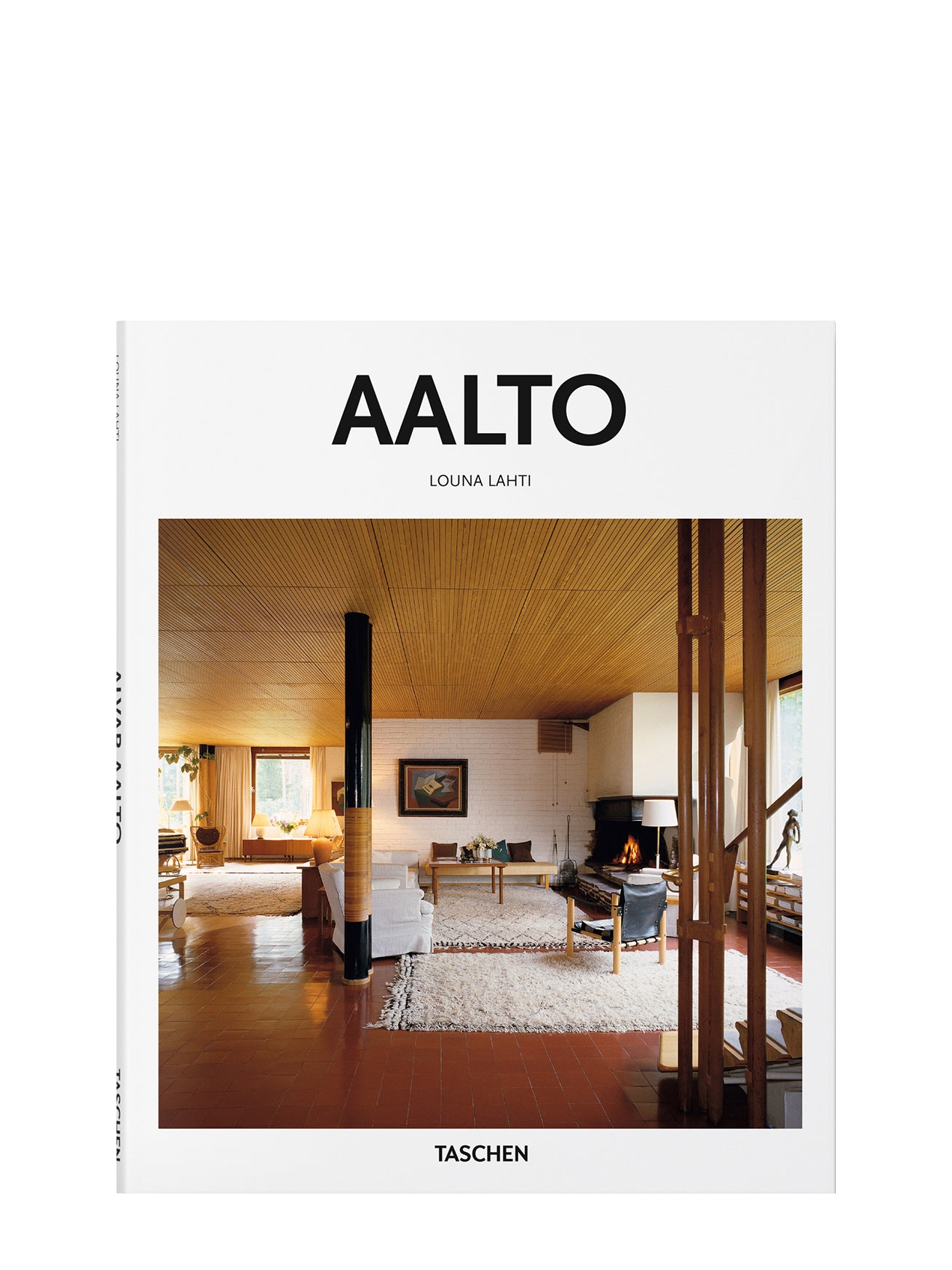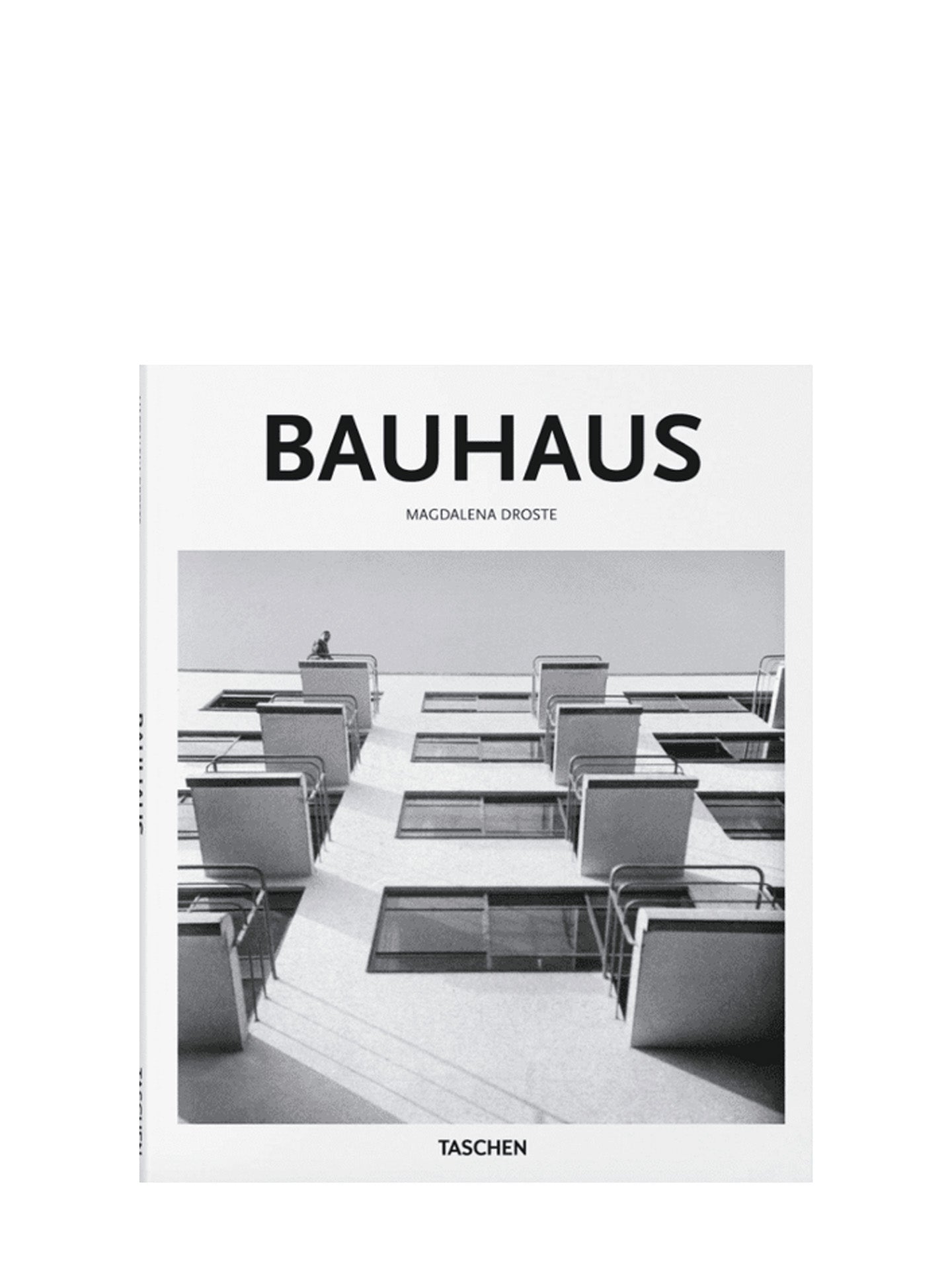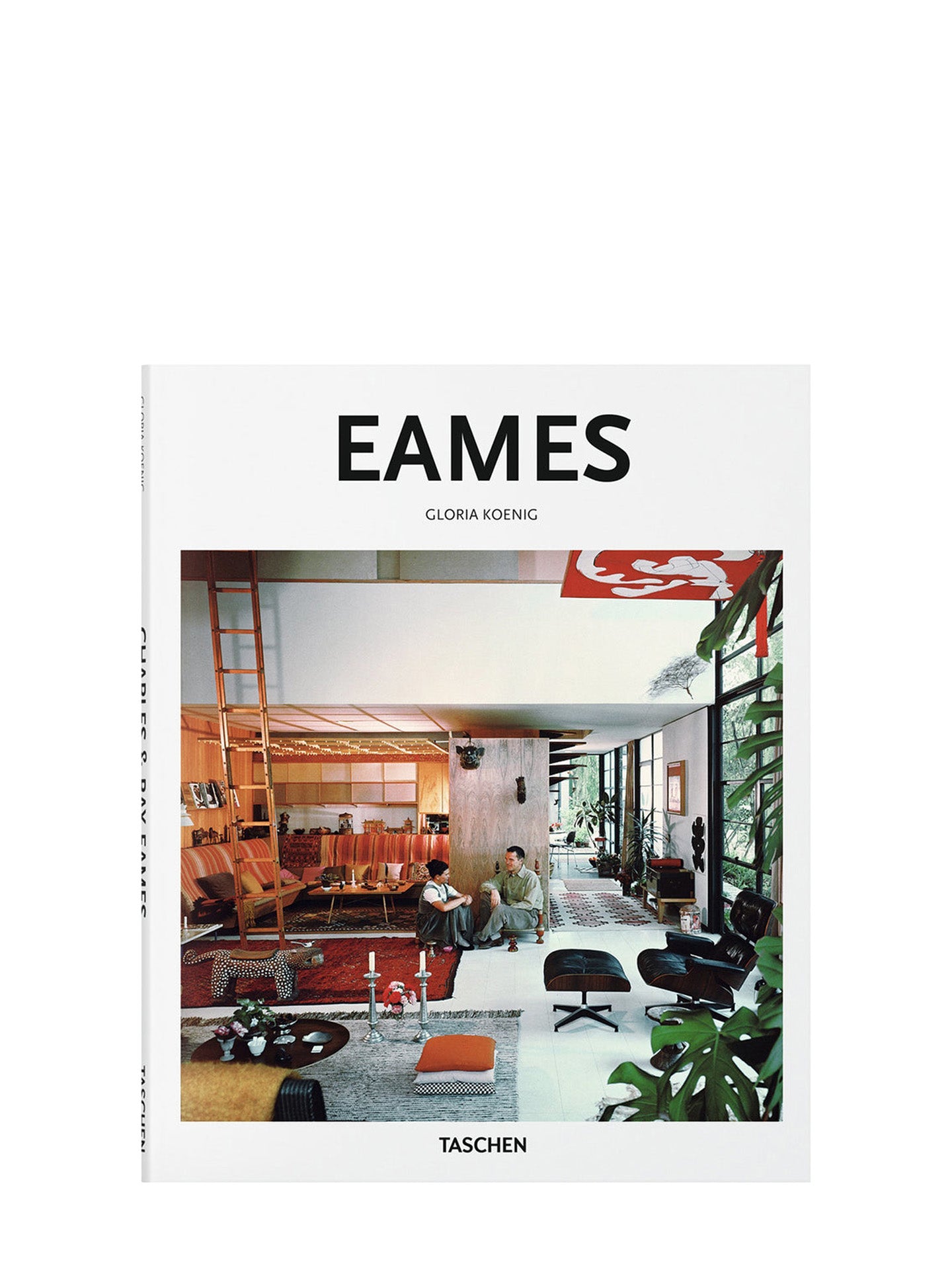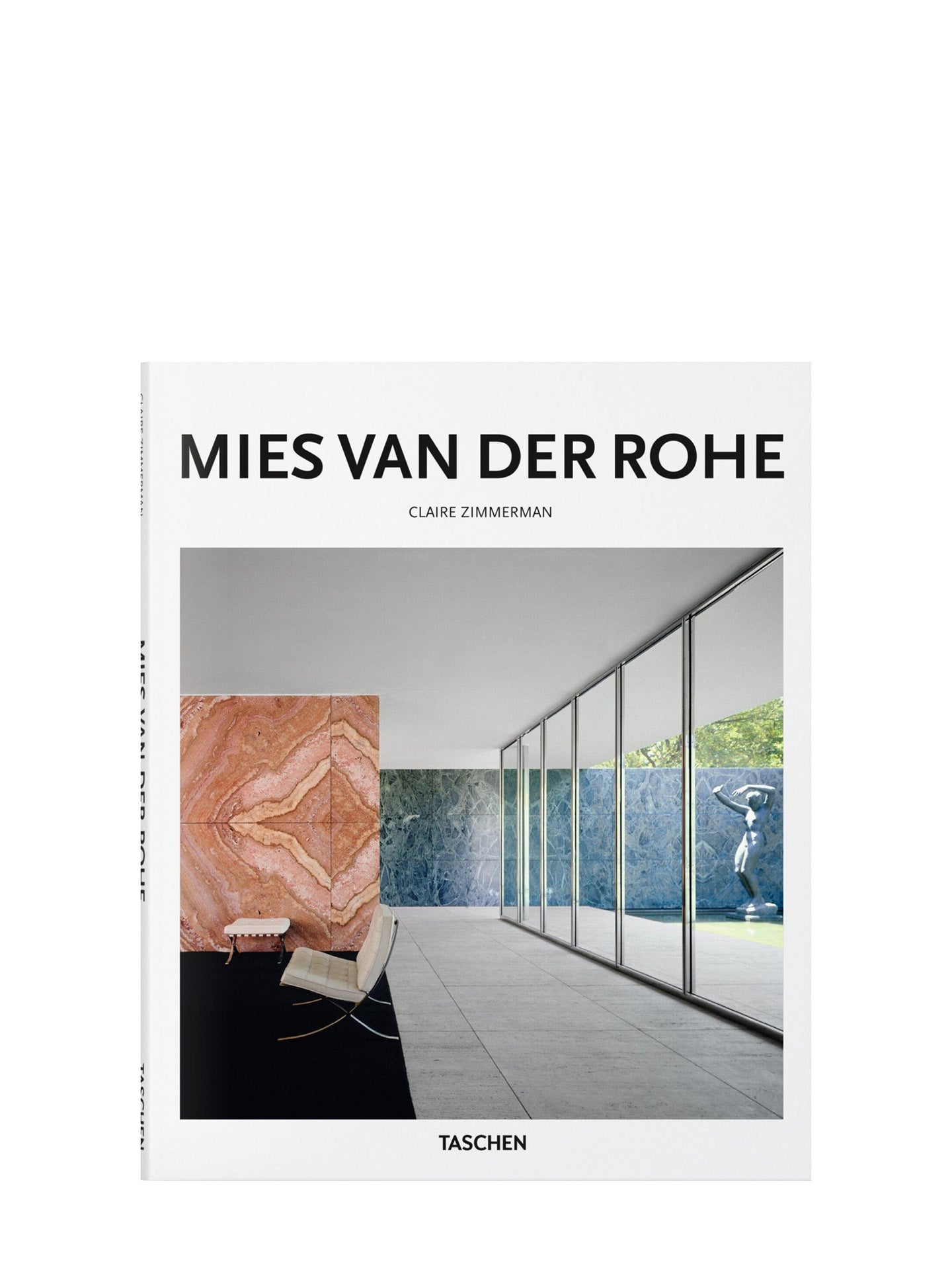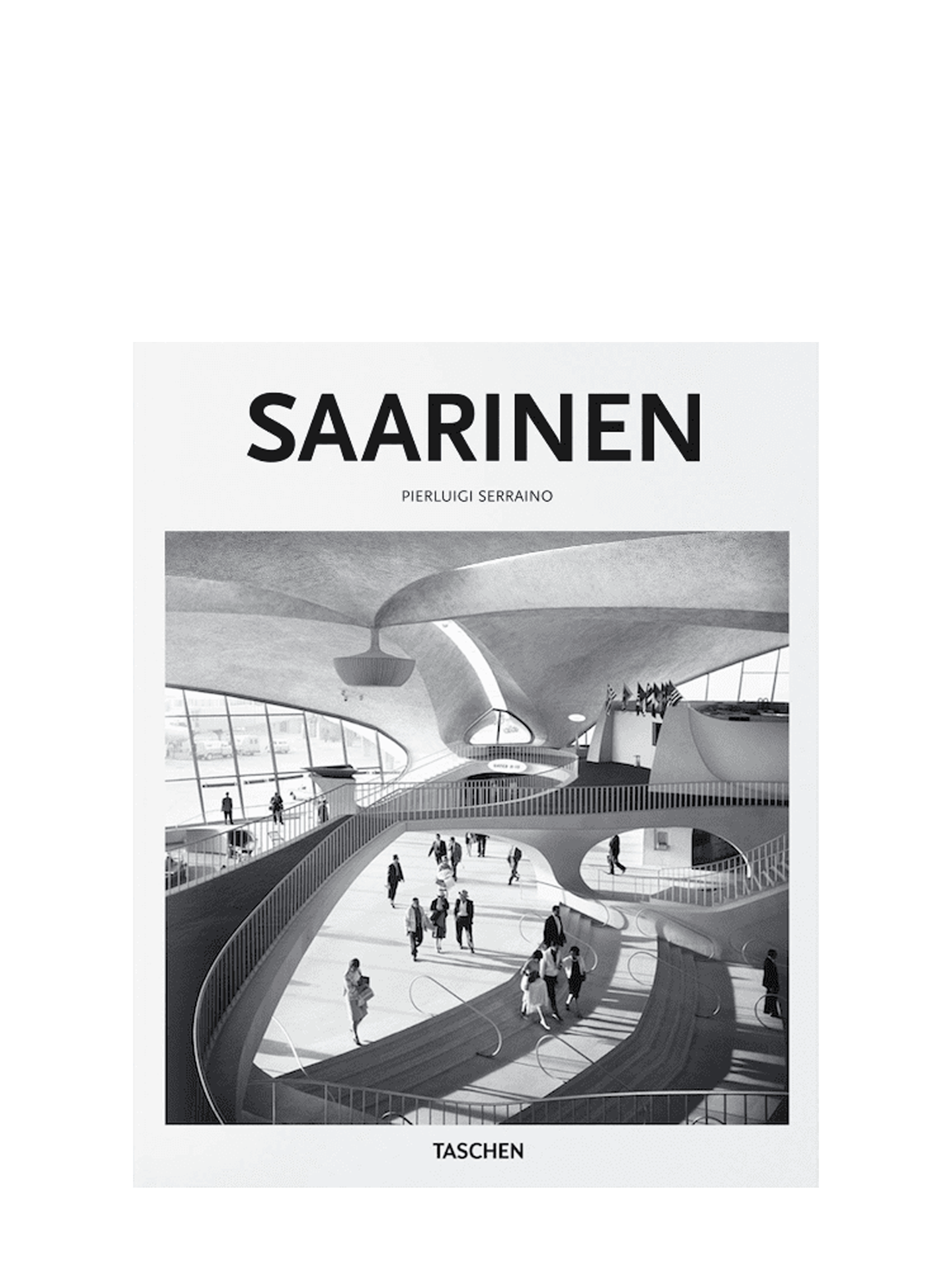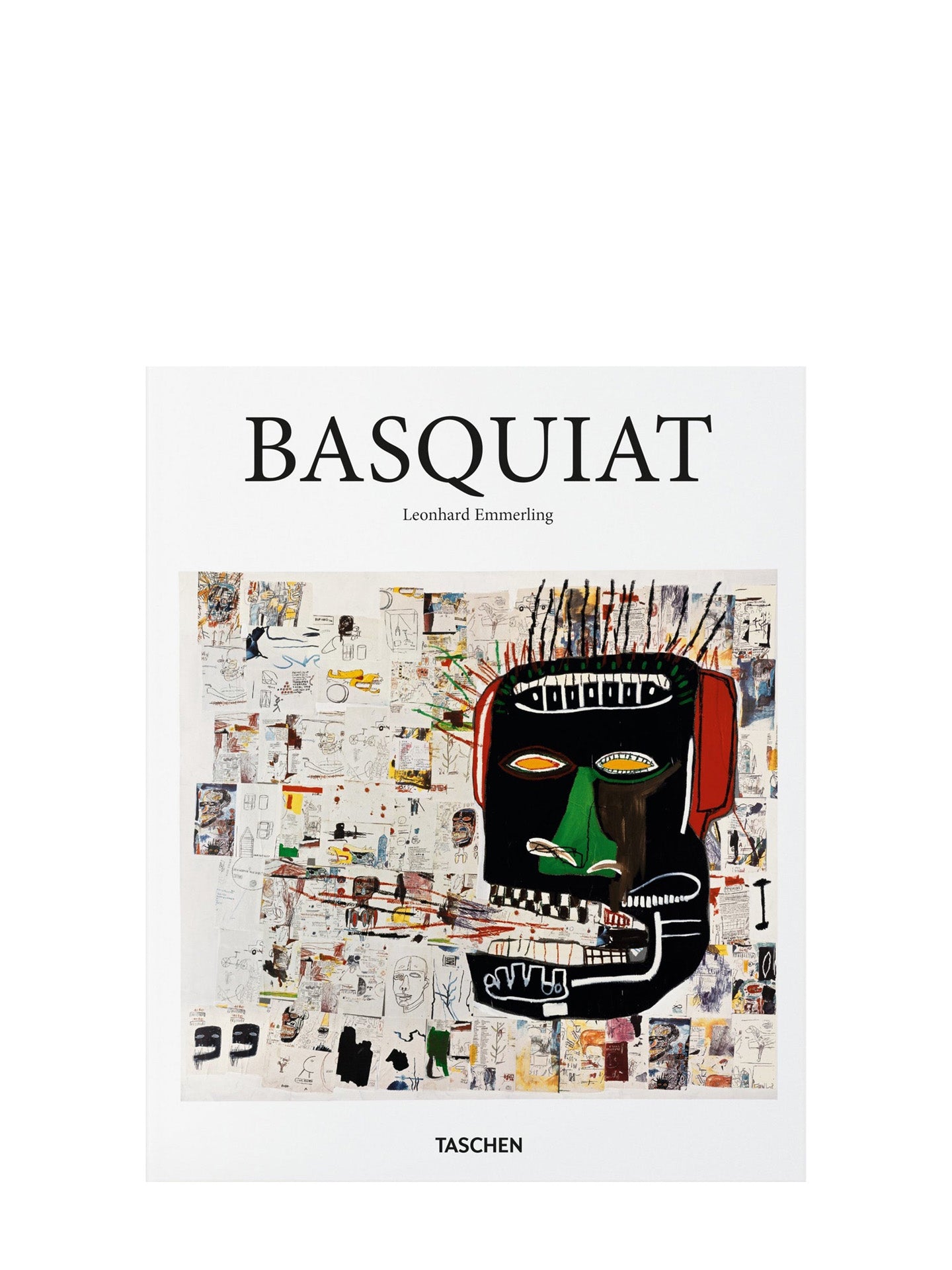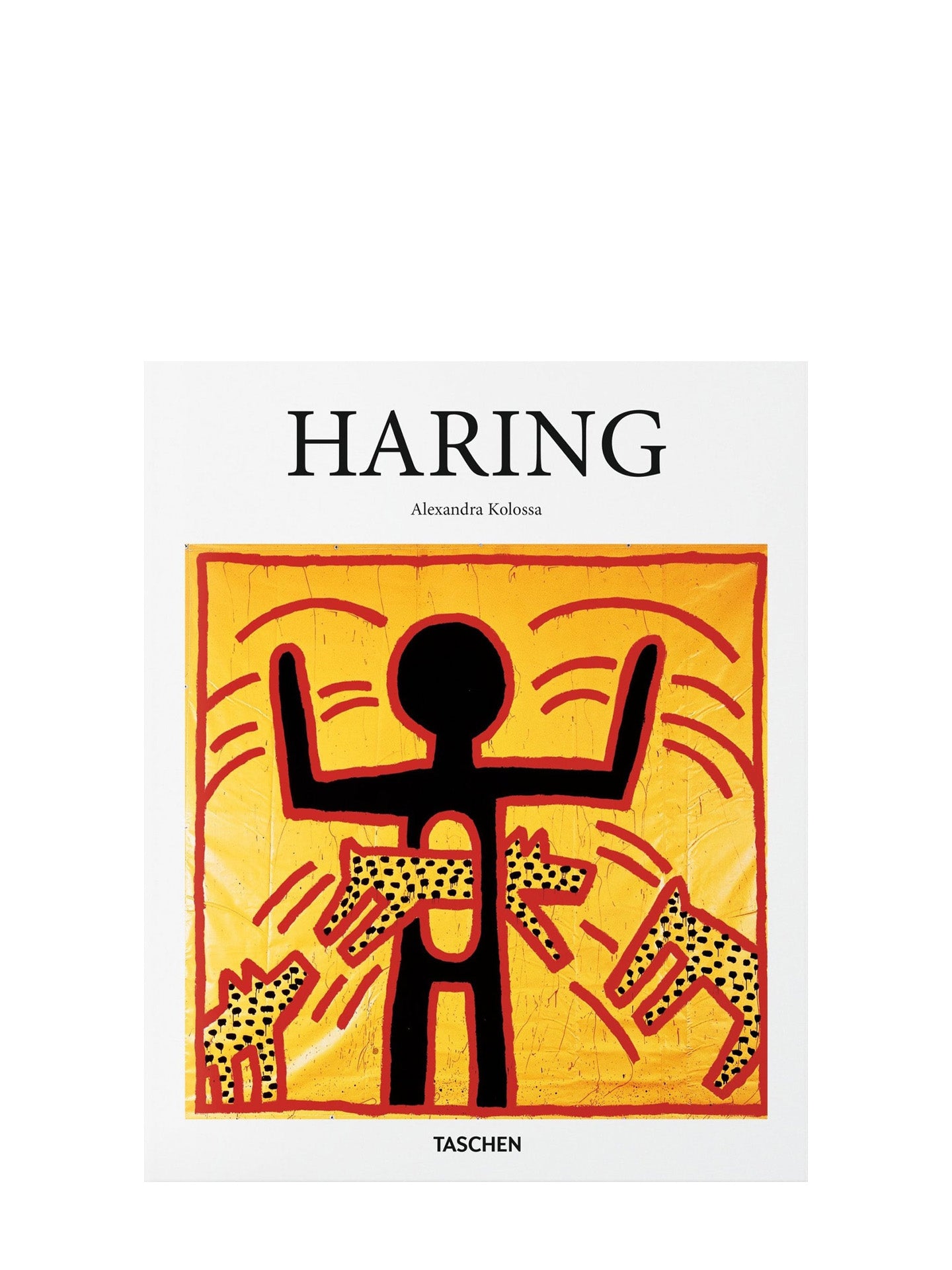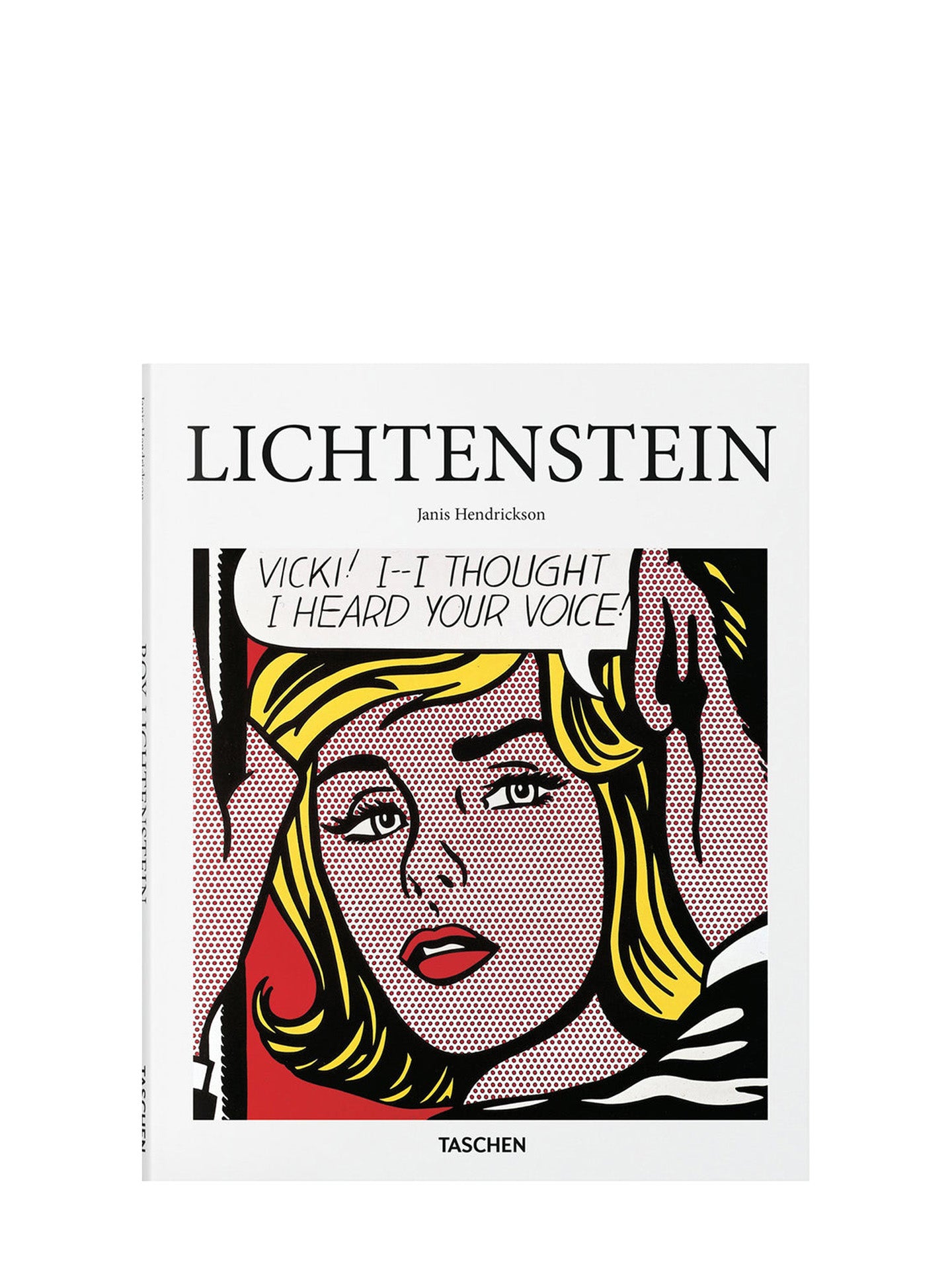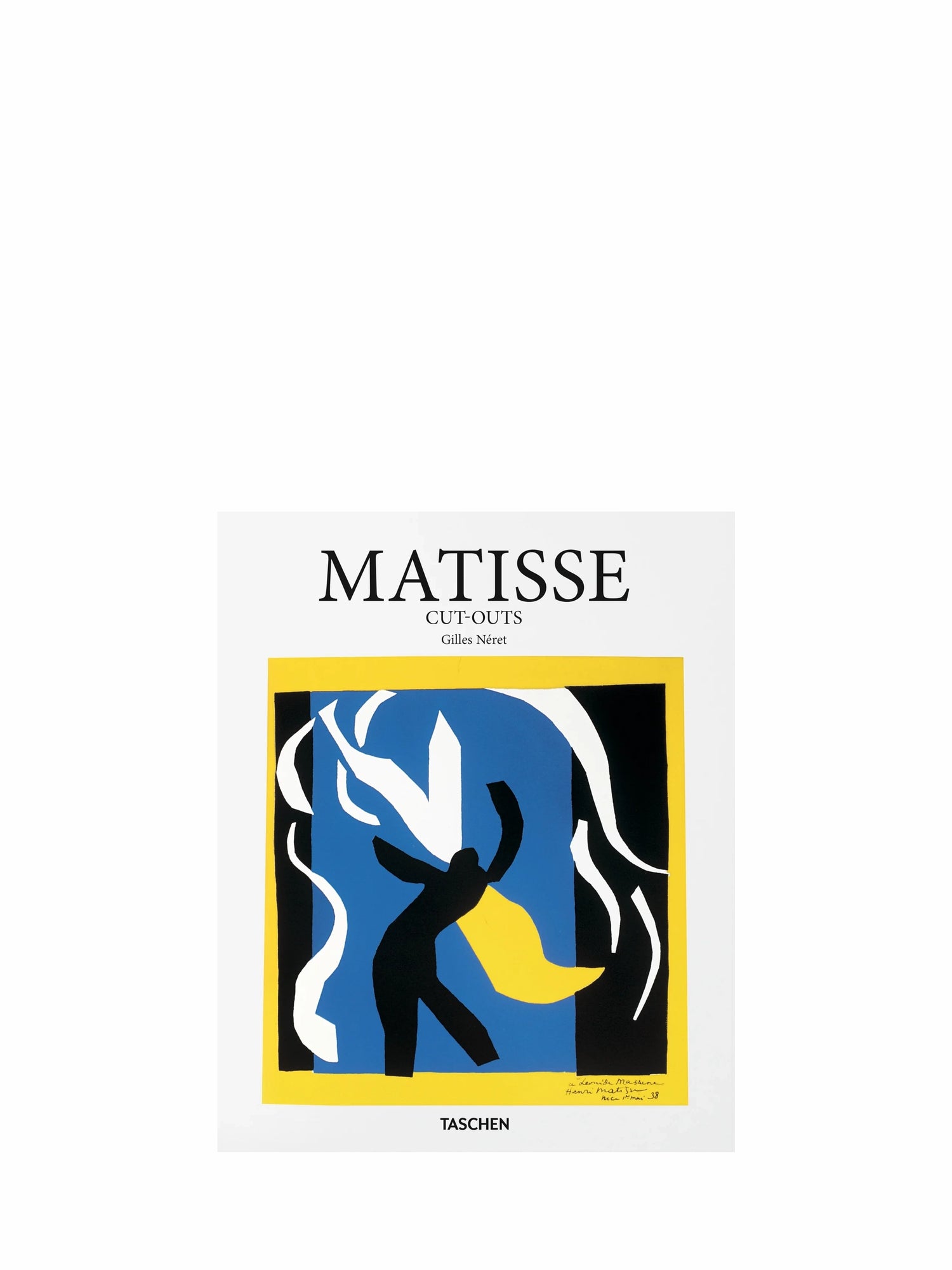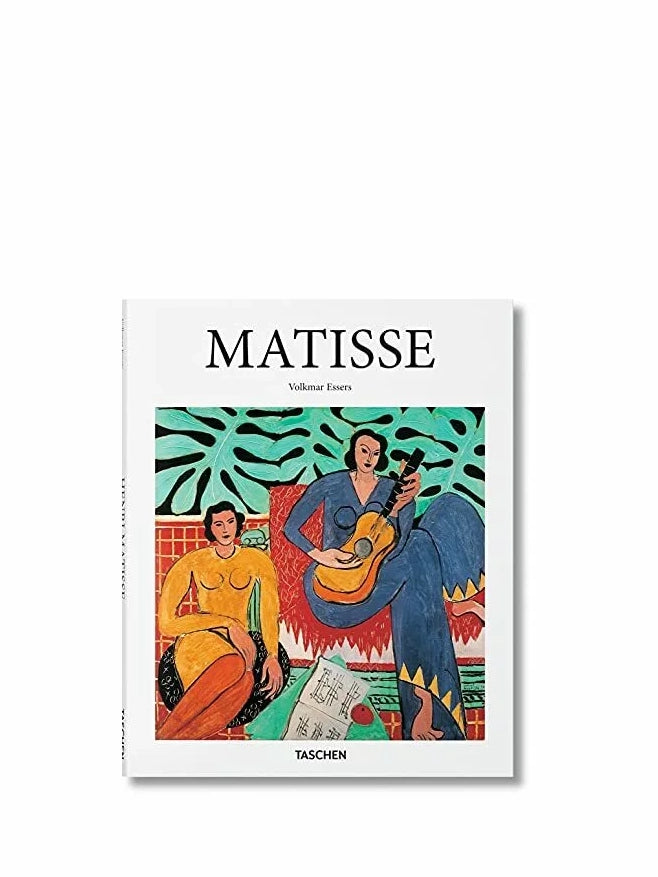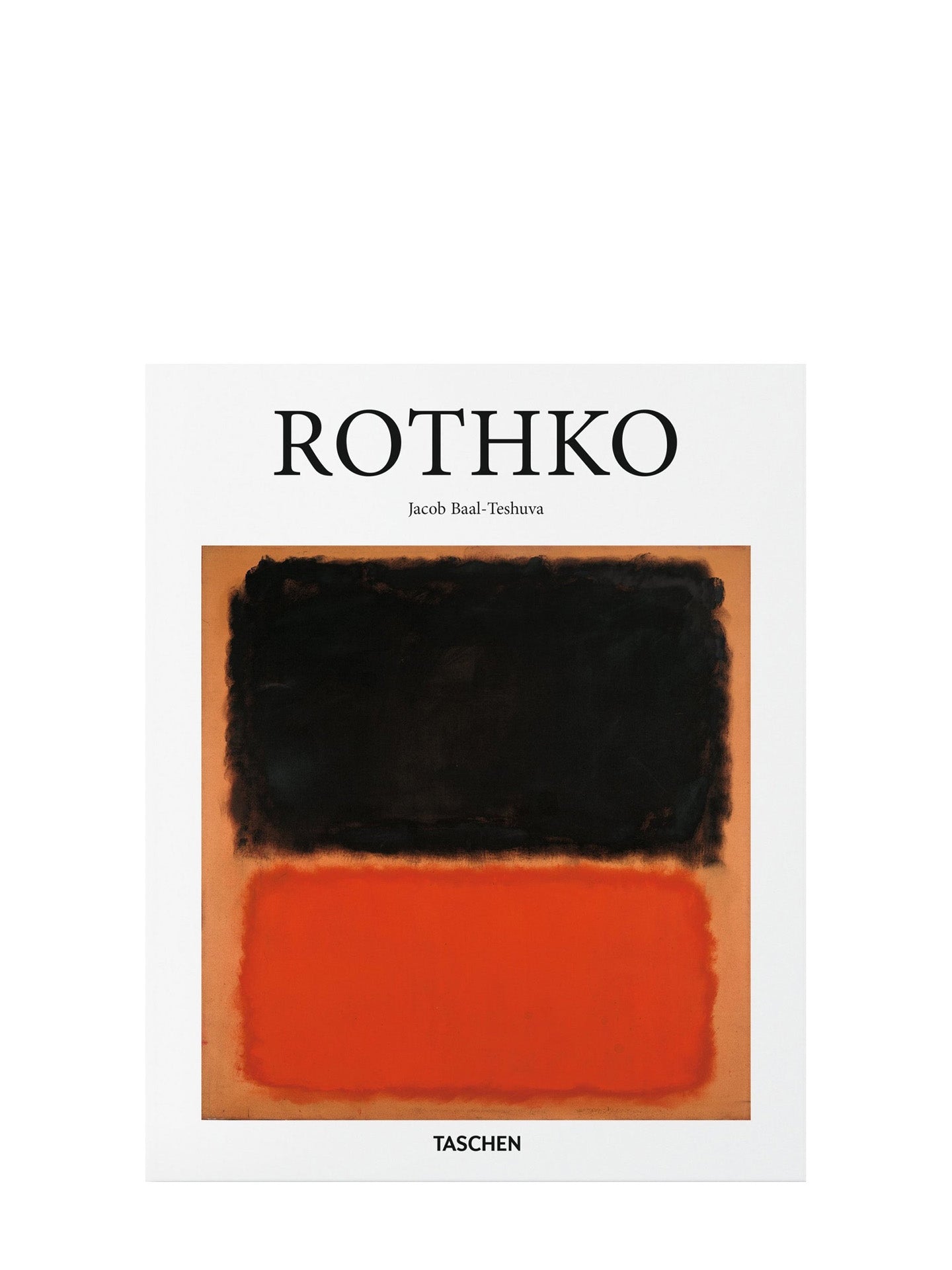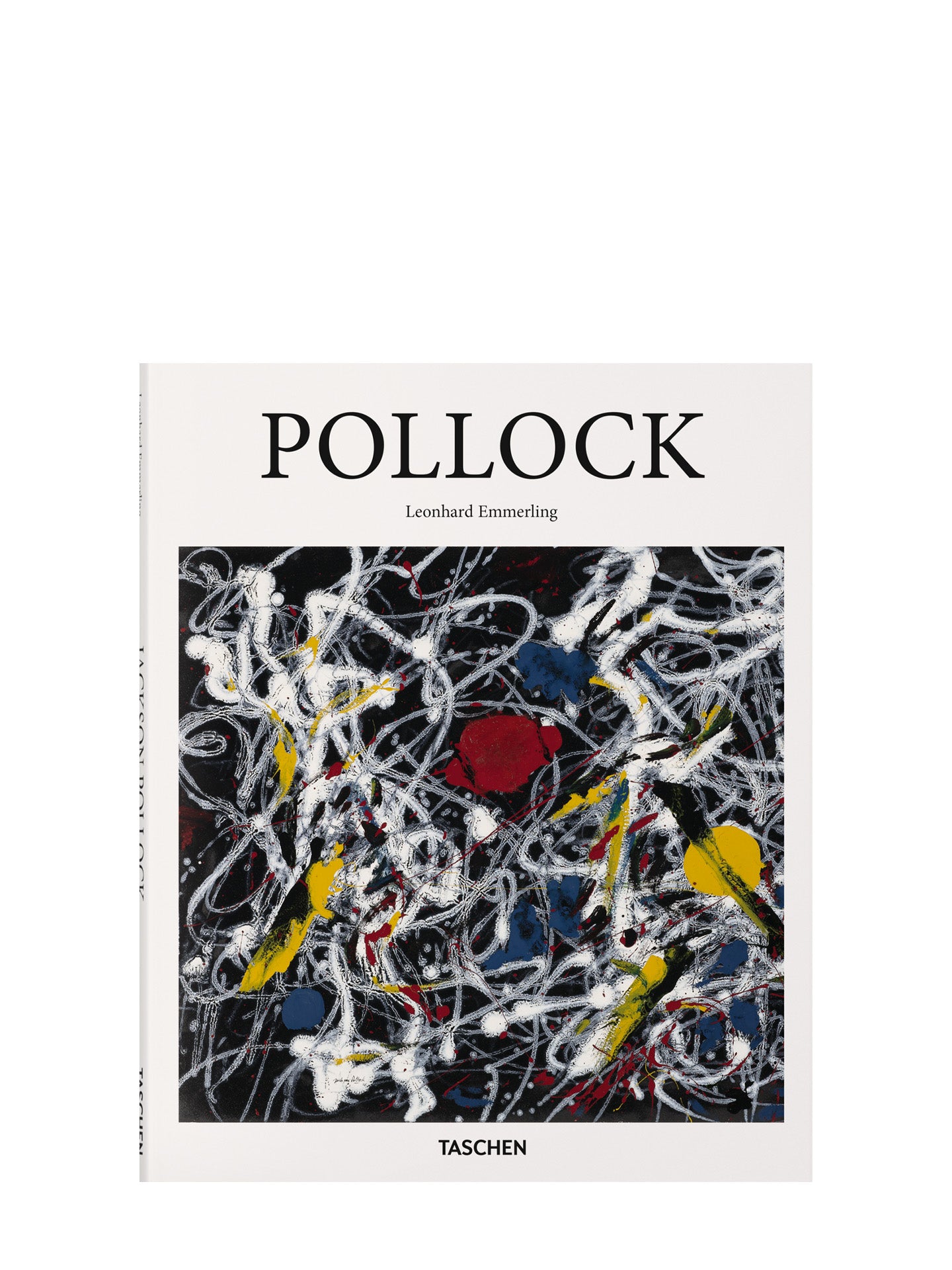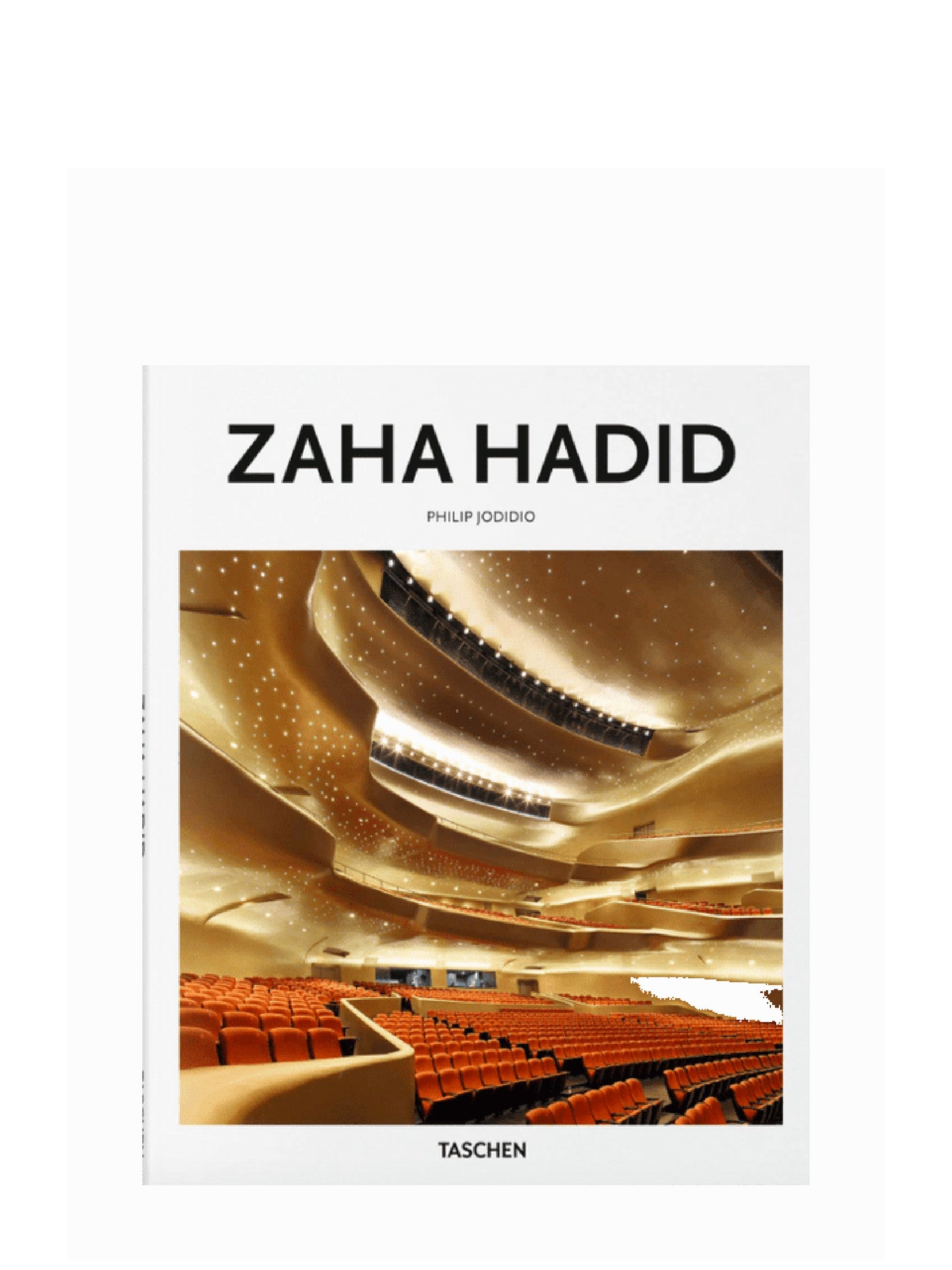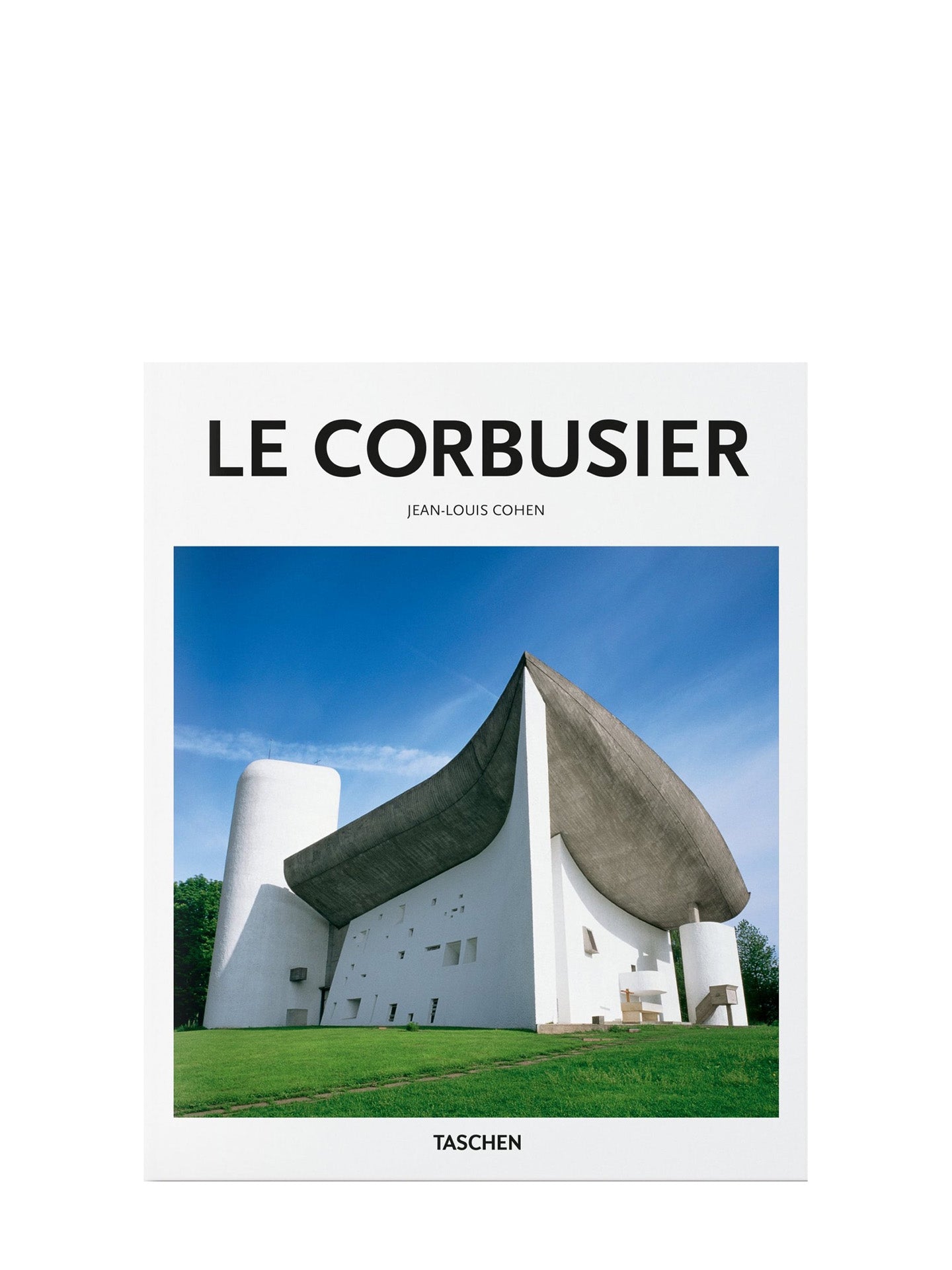
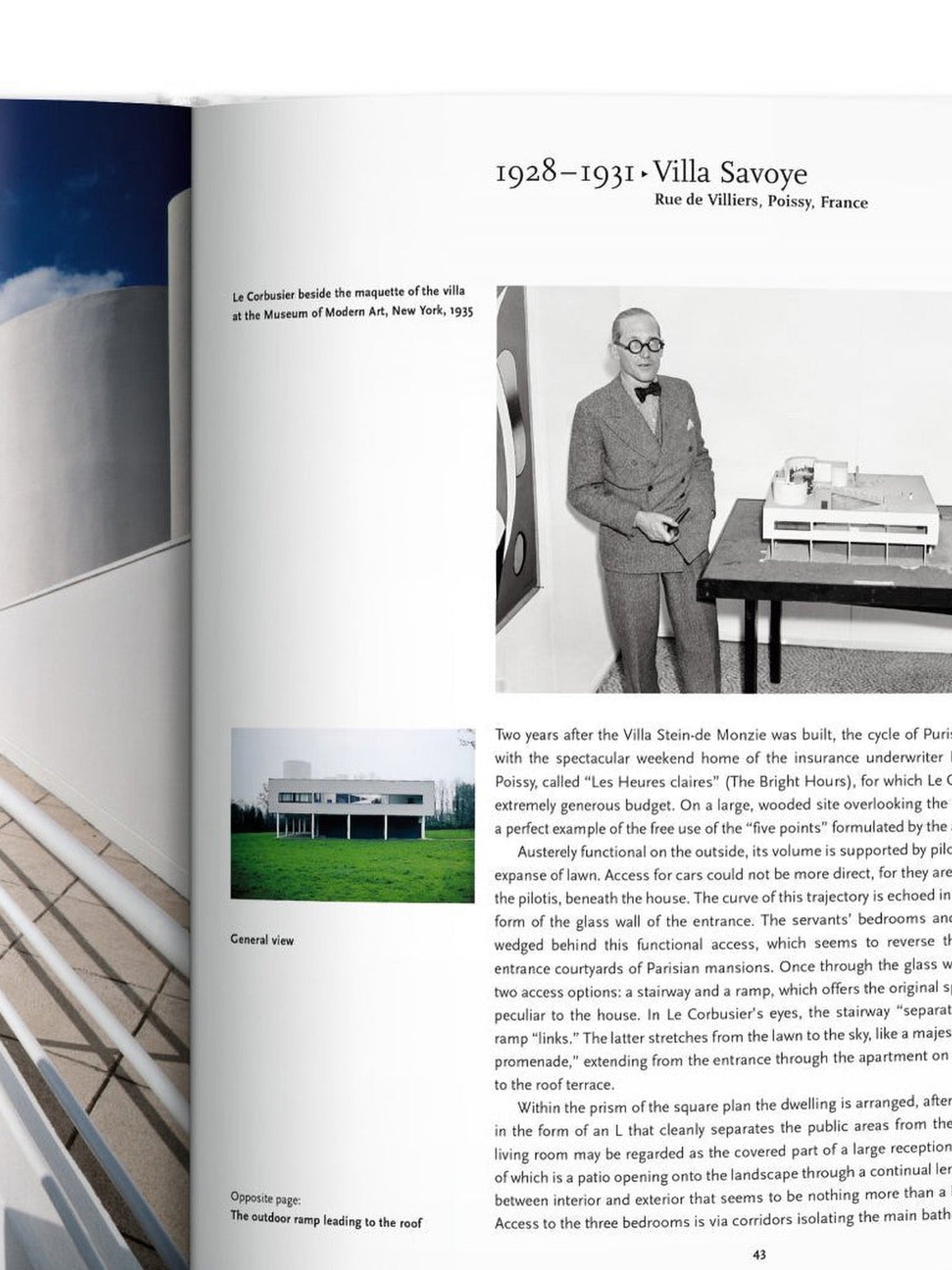
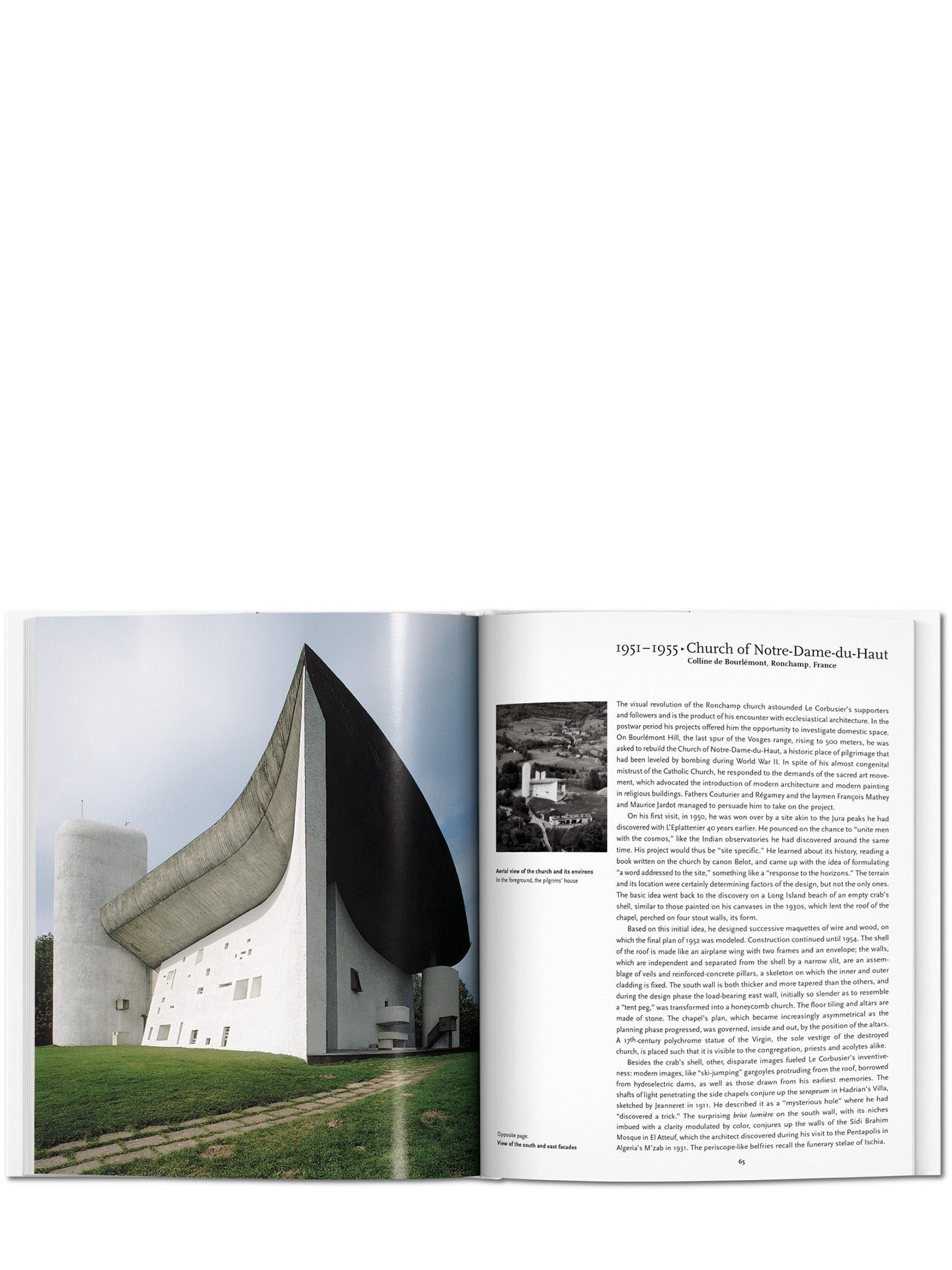
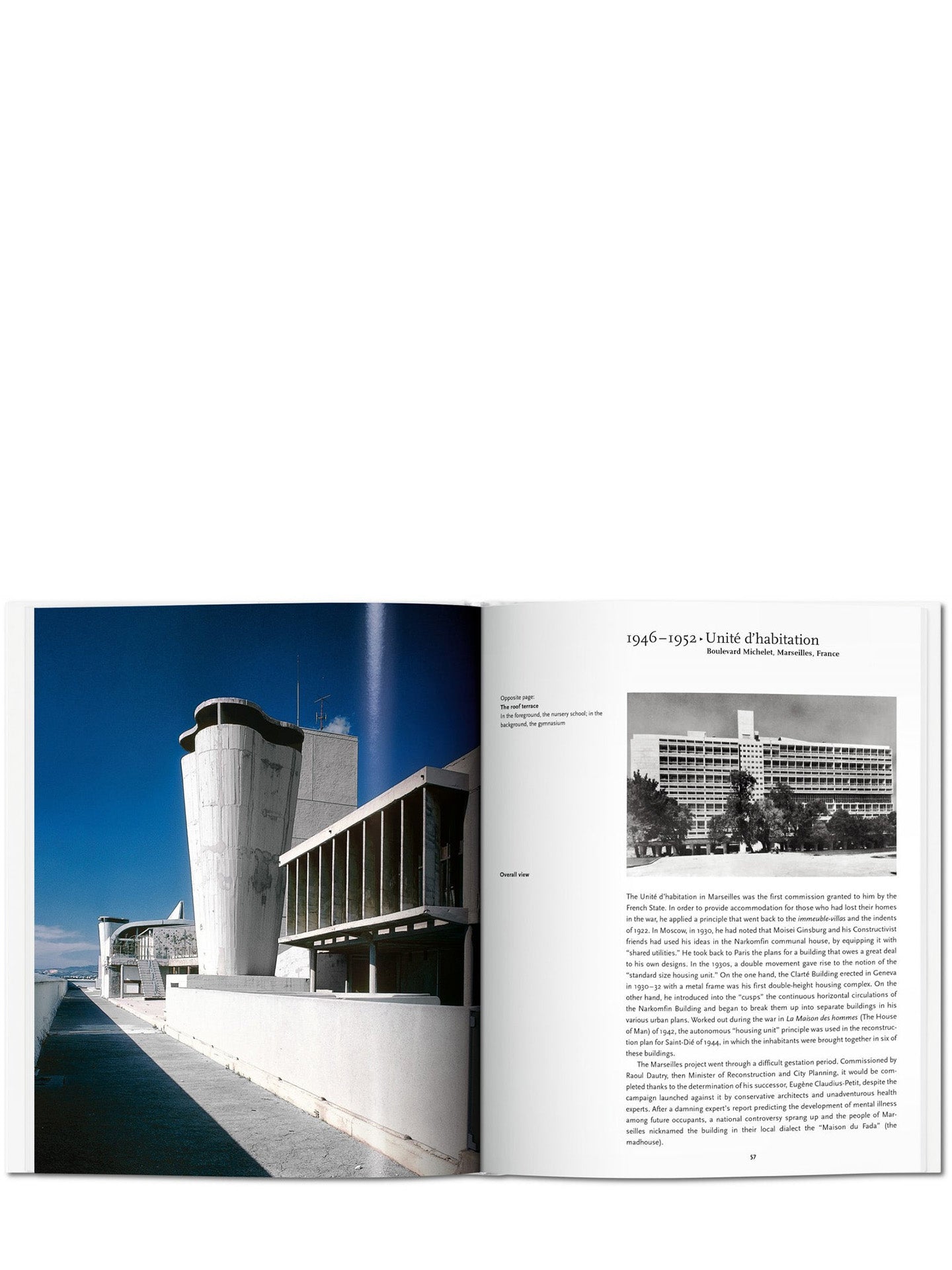
Le corbusier, basic art series
Like a fellow architect and close friend Alvar Aalto, Corbusier's vision for the modernist architecture has two disctinct trajectories, one with the rigid system, modularity and rationale and the one with expressive curves, lines that flow and form that's free from all the previous.
Born Charles-Édouard Jeanneret in 1887, Le Corbusier became the most influential architect of the 20th century, equal parts visionary, polemicist, and builder.
Like his close friend Alvar Aalto, Le Corbusier’s designs took two strikingly different paths: one defined by strict systems, modular grids, and rational form as seen in the building complexes in Berlin and Marseille; the other by fluid curves, lyrical lines, and bold gestures like the chapel at Ronchamp or the sweeping civic projects of Chandigarh. From pristine white villas to vast housing schemes, his work fused functionalist ideals with a surprising sense of poetry.
This volume in Taschen’s Basic Art series presents Corbu's landmark projects with superb illustrations, thoughtful writing, and the kind of bookmaking quality that never dates. It’s a mindful purchase: part design history, part inspiration, and entirely gift-worthy. Perfect for architecture lovers, urbanists, or anyone who’d love a Corbusier chair but wouldn’t mind starting with the book.
Taschen’s Basic Art series offers accessible, always beautifully illustrated introductions to key artists, movements, and architects, combining concise texts with rich visuals, perfect little art history summaries.
- Author(s): Jean-Louis Cohen and Peter Gössel
- Size: 22 x 1 x 26,5 cm and 96 pages
- Language: English
- Published: 2015
Couldn't load pickup availability
Shipping & delivery
SUOMEKSI
Kaikki tilaukset käsitellään arkisin ja niiden lähtöpaikka on Helsinki, Suomi.
Tilaukset Suomeen:
- Toimituskulut: 6,90 €, paitsi jos tilaus toimitetaan kahdesta myymälästä (13,80 €) tai kolmesta myymälästä (20,70 €)
- Toimitusaika: 1–3 arkipäivää Postin noutopaketilla
Tilaukset muihin EU-maihin:
- Tanska ja Ruotsi, toimituskulut: 18 €
- Tanska ja Ruotsi, toimitusaika: 2–5 arkipäivää Postin noutopaketilla
- Muut EU-maat, toimituskulut: 18 €
- Muut EU-maat, toimitusaika: 3–6 arkipäivää DHL:n kuljettamana
Huomioithan, että toimitusajat ovat arvioita ja voivat viivästyä ruuhka-aikoina. Tuotteiden hinnat sisältävät ALV:n. EU:n sisällä ei peritä muita veroja tai tulleja.
IN ENGLISH
All orders shipped from Helsinki, Finland, on business days.
To Finland:
- Shipping cost: 6,90€, except when fulfilled from two stores (13,80€) or three stores (20,70€)
- Delivery time: 1–3 business days by Posti
To Other EU countries:
-
Denmark & Sweden the shipping cost: 18€
- Denmark & Sweden delivery time: 2–5 business days by the Posti Pickup Parcel
- Other EU countries the shipping cost: 18€
- Other EU countries delivery time: 3–6 business days by DHL
Please note that delivery times are estimates and may vary during busy seasons. All prices include VAT, and no additional taxes or duties are charged within the EU.


